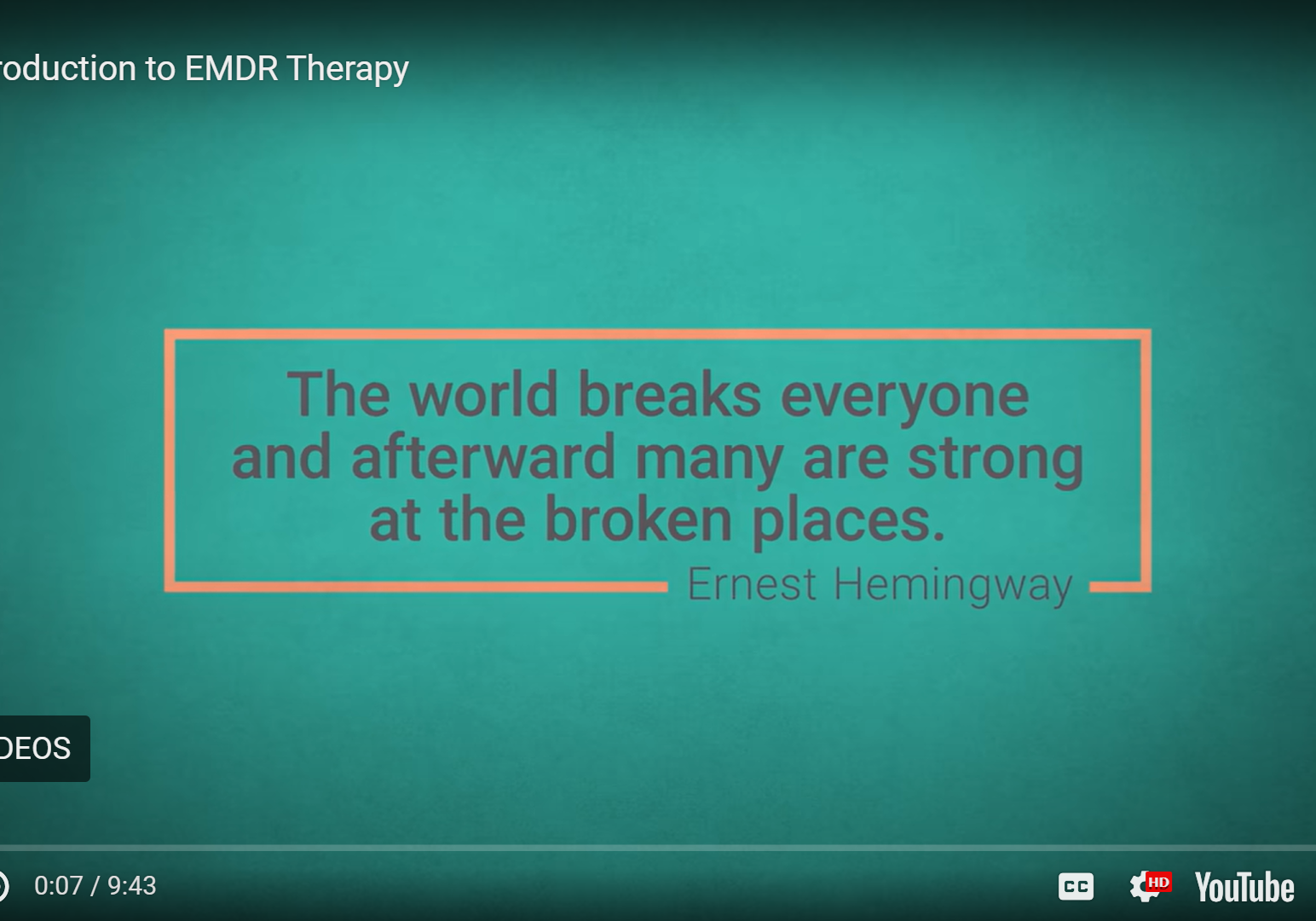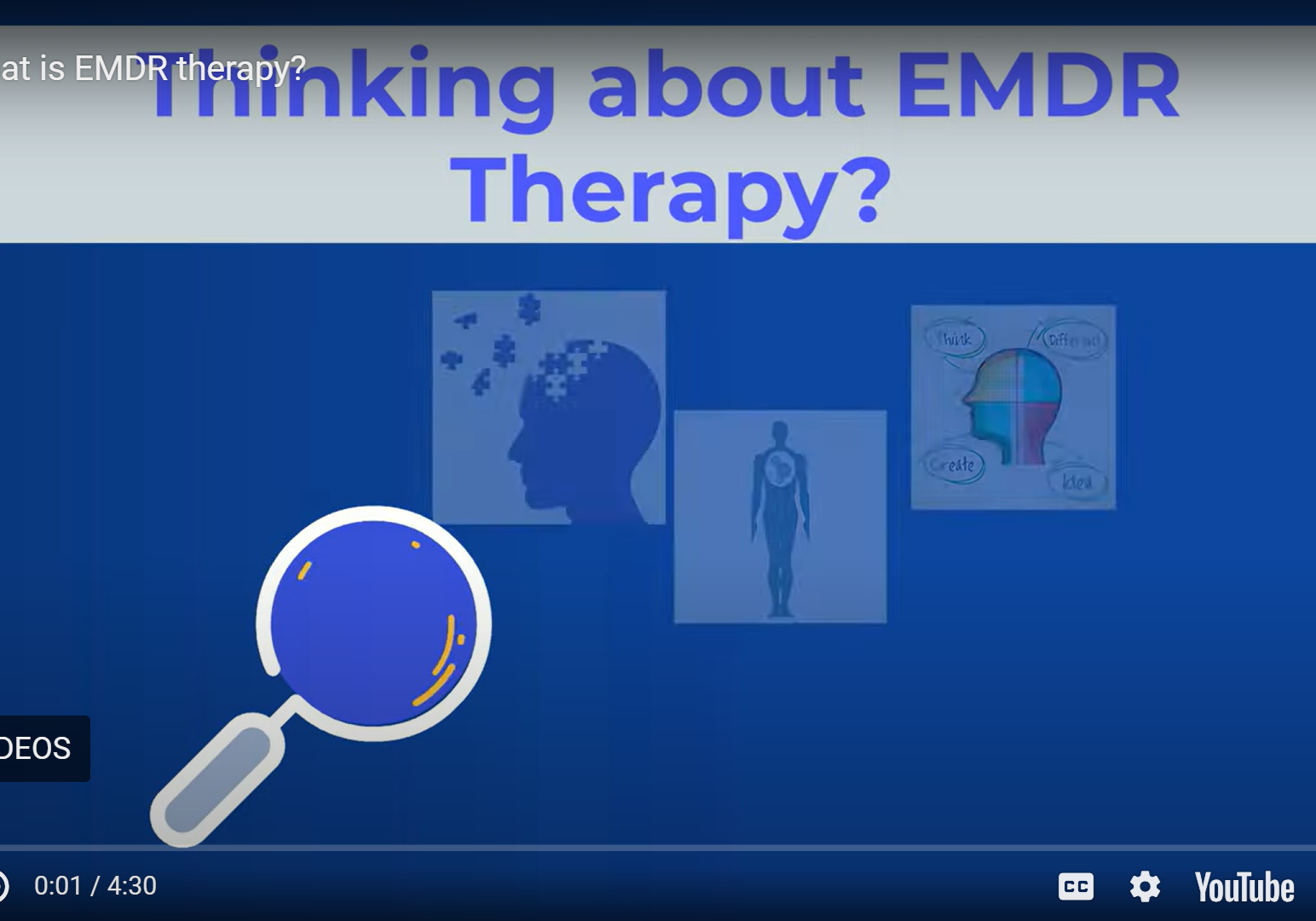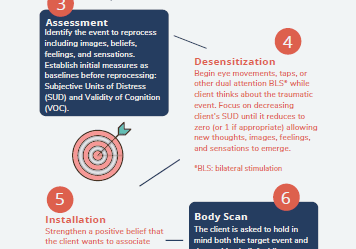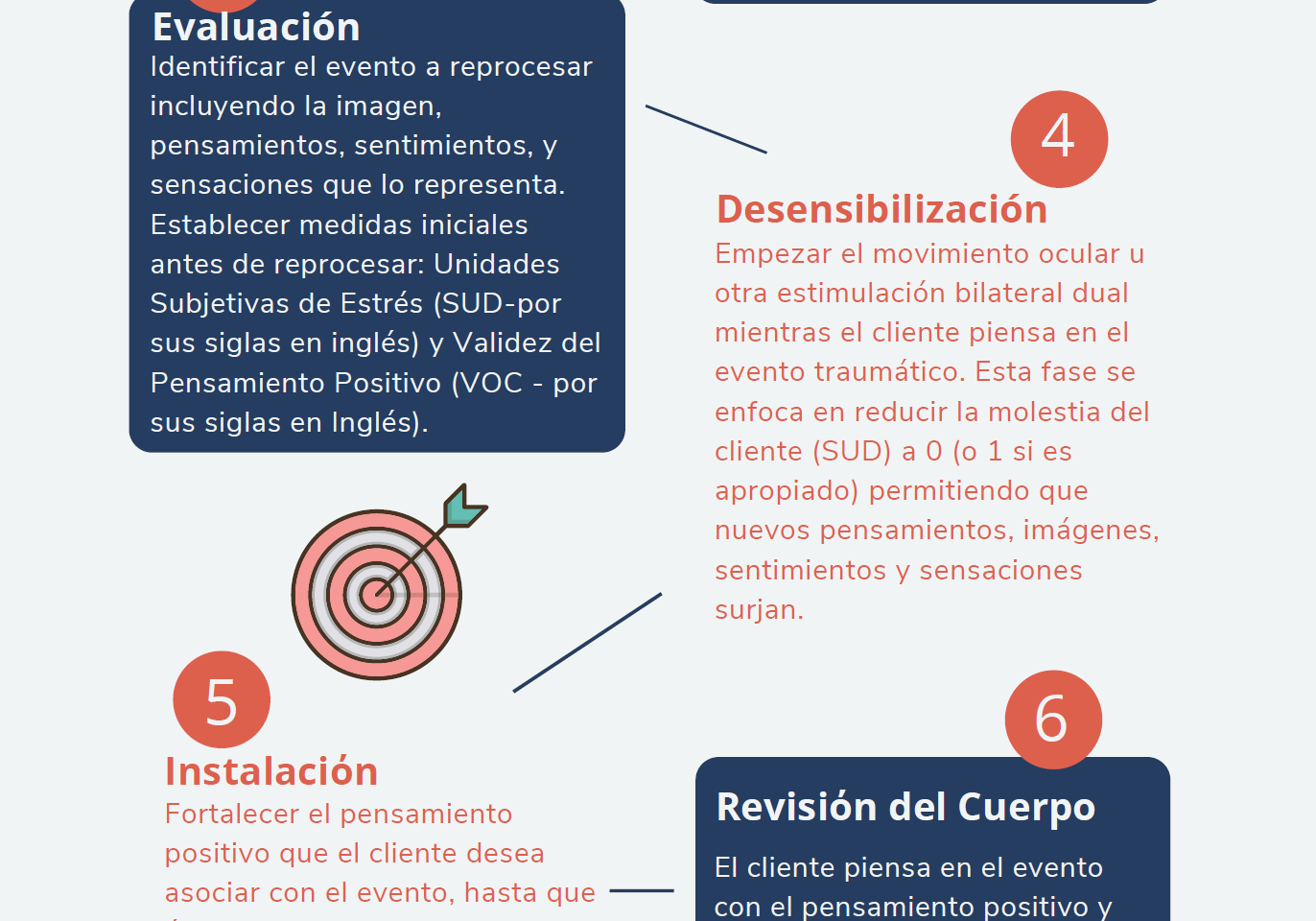What is the Adaptive Information Processing (AIP)?
The Adaptive Information Processing (AIP) model is a theory that describes how the brain processes and links memories. It explains symptoms, guides Eye Movement Desensitization and Reprocessing (EMDR) therapy treatment, and predicts therapy outcomes.
The AIP model helps us understand EMDR therapy. It recognizes that both positive and negative experiences influence a person’s current perceptions, feelings, thoughts, and behaviors: “The past is present.” Experiences from the past become the “glasses” that we wear when we see the present. Disturbing experiences appeared "stuck" and linked to other disturbing ones. EMDR therapy helps us to get unstuck so those old feelings, thoughts, and body sensations do not keep affecting our lives today.
Many of the current problems that people come to therapy for such as anxiety, depression, relationship difficulties, etc., are rooted in memories of traumatic or adverse life experiences. Identifying and reprocessing these memories is a focus of EMDR treatment. EMDR therapy is designed to create the conditions to activate the brain’s processing abilities and aid in the recovery process.
Let’s Explore an Example
Nico, a six-year-old boy, is learning to swim while his father holds him in the water. His father gets distracted for a minute, loses his grip on Nico, and the child goes underwater. Nico’s father grabs him and brings him to the surface. As Nico begins to cry, his father comforts and reassures him. Nico learns that he is OK, and the fear passes.
Later, Nico will likely recall how much fun he was having in the water because of the safety and support that his father gave him after the scary moment. The memory gets processed adaptively and is not troubling.
Now let’s pretend for a moment that Nico’s father does not offer the support needed. Perhaps he does not offer comfort and reassurance. Perhaps he blames Nico for overreacting or for going underwater.
Later, when Nico thinks about the experience, he cannot recall how much fun he had in the water. In this example, the distress is not resolved. He did not receive safety and support from his father, and the memory becomes linked in a nonadaptive way. He might experience feelings of guilt, responsibility, anxiety, and fear. Nico might avoid swimming.
As an adult, Nico might recall this event at a seemingly cognitive level. However, the recalling might also be in the form of disturbing sensations, images, or beliefs about himself, such as “I am not in control.” The experience of going underwater and not receiving any comfort has overwhelmed Nico’s information processing system.
How Can EMDR Therapy Help Nico?
As an adult Nico experiences disturbing sensations and negative beliefs about himself. During therapy, he discovers that they began after the swimming incident. EMDR therapy could help him move to a more adaptive understanding that it was a momentary experience. It happened a long time ago, and now he has much more control over how he handles himself. He could also realize that his father’s response was the problem and that his fear reaction was normal and understandable at the time of the event. Nico can feel relieved that he was a child and he can have different reactions as an adult.

Many current difficulties people experience are derived from earlier life experiences. The past is present.
Traumatic and disturbing life experiences get linked in the brain with their original thoughts, feelings, images, and body sensations. The response toward those events was a natural response at the time of the event. It was an attempt to adapt to a difficult situation. According to the AIP model, people are not biologically broken. They are stuck because of how disturbing life experiences are linked to their nervous system. Once this information is accessed and reprocessed, the adaptive information system is relinked, and a more positive and empowering understanding of the present can surface.
For example, a person who experienced bullying as a child might experience current thoughts of not feeling good enough and being anxious in their professional life, even if the person does not think about the past experience of bullying anymore. Through EMDR therapy, they can reprocess those memories to begin appreciating their current skills and abilities instead of being stuck with the view of the past.
“When an event has been sufficiently processed, we remember it but do not experience the old emotions or sensations in the present. We are informed by our memories, not controlled by them.” (Shapiro, 2018, p.3).

The brain wants to restore mental health in the same way the rest of the body is physiologically configured to heal when injured.
When someone cuts their finger while cooking, this person does not have to consciously think about their white cells and all the internal systems in place for healing. The brain and the body automatically work together to close and heal the wound. However, if a foreign object blocks the healing process, the pain will continue, and this person might need the support of another person to remove the object. Once the block is removed, the healing will resume. EMDR therapists support people to remove blockages so the natural processing of information may continue.
EMDR is primarily a client-centered model. Although some clients might experience some disturbance during treatment, this distress is temporary and transitional while the brain connects to more adaptive information. For example, a person might think that a car accident is their fault, even though the other driver ran the red light. They might feel guilty, even though they know cognitively that they are not at fault. Through EMDR procedures and dual bilateral stimulation, the brain connects to more adaptive information, such as the fact that there was no possible way to guess that another person would run a red light.

The AIP directs the therapeutic process and gives clients hope.
EMDR therapy does not focus only on coping with the current symptoms or presentations.
EMDR therapists look to the experiences or events that drive these behaviors, feelings, thoughts, urges, or physical reactions. The guiding question for treatment is: What circumstances or experiences in this person’s life cause them to respond in such a way now?
Similar experiences are linked to those previously linked memories and are the basis for current maladaptive interpretations, feelings, and behaviors. The reprocessing of a memory causes a shift in all its components, including sense of timing, age, symptoms, reactive behaviors, and sense of self, not only on a cognitive level but also on a physiological level (Shapiro, 2018).
For example, a client who witnessed physical abuse by his father toward his mother might be stuck on the thought that he “should have defended her” even though he was just 10 years old. These might cause current feelings of powerlessness and anger toward himself or others. Through EMDR therapy, those two parts of the memory become connected, and he can feel more self-understanding around the fact that he did everything he could as a child. This gives a message of hope because the client can see their current symptoms due to learned behaviors that can be unlearned.
EMDR therapists use the tenets of the AIP model to conceptualize cases and guide treatment planning. Utilizing the AIP model facilitates the ability of many EMDR therapists to achieve substantial and comprehensive treatment effects (Shapiro, 2018).
“EMDR therapy targets the unprocessed memories that contain the negative emotions, sensations and beliefs. By activating the brain’s information processing system [AIP], the old memories can then be “digested.” Meaning what is useful is learned, what’s useless is discarded.” (Shapiro, 2013, p.6).

What's the next step?
Find an EMDR Therapist in Your Area
The EMDRIA™ Find an EMDR Therapist® directory is an up-to-date resource to find EMDRIA™ members providing EMDR therapy in your area. The directory includes searches by location, name, and other criteria.
Want to learn more about EMDR therapy?

Introduction to EMDR Therapy
In this video, learn what it’s like to experience EMDR therapy and how the therapy is widely recognized by trusted organizations.

Thinking about EMDR Therapy?
What does EMDR therapy look like? This short video for clients explains the 8 Phases of EMDR Therapy and what they might experience in EMDR therapy sessions.

8 Phases of EMDR Therapy Infographic
Discover the 8 phases of EMDR Therapy to treat traumatic events. From history and treatment plan to reevaluation and more.

Infografía de las 8 fases de la terapia EMDR
Descubre las 8 fases de la Terapia EMDR para tratar eventos traumáticos. Desde la historia y plan de tratamiento hasta la reevaluación y mas.

Citations
Bergmann, U. (2019). Neurobiological foundations for EMDR practice. Springer Publishing Company.
Shapiro, F. (2013). Getting past your past: Take control of your life with self-help techniques from EMDR therapy (p. 352). New York, NY: Rodale Press.
Shapiro, F. (2018). Eye movement desensitization and reprocessing (EMDR) therapy: Basic principles, protocols, and procedures (3rd ed.). Guilford.
More Resources
Find more AIP model resources in the EMDRIA™ Library.
Special thanks to our members Sharon Rollins, Uri Bergmann, and Mark Nickerson for their invaluable feedback regarding this page.


